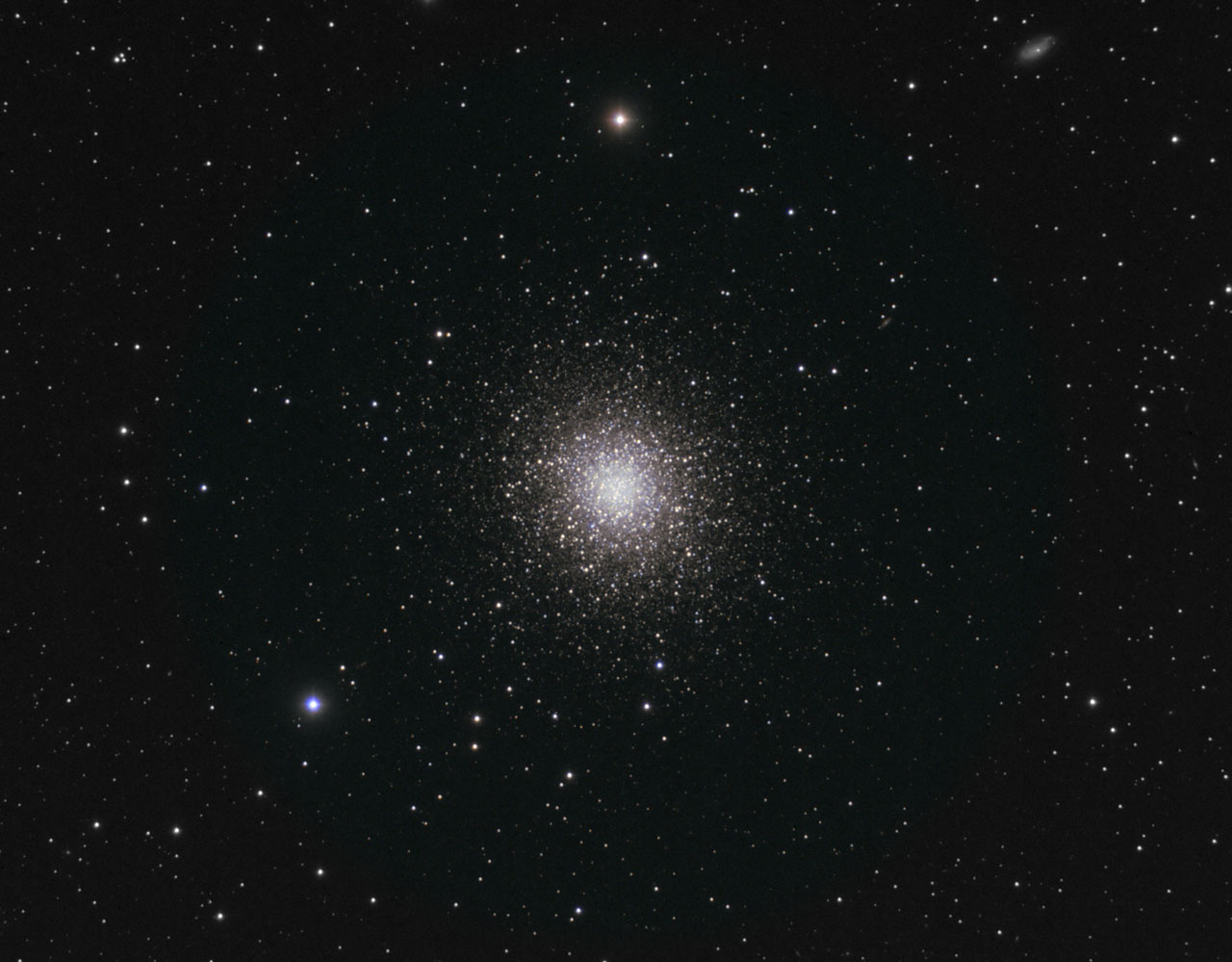Since returning from OSP I’ve been busy catching up on a backlog of orders, on top of the usual chaos here at Wa-chur-ed Observatory. But I took a break from that to do a quick processing of a couple of images I captured at OSP. These were both done with my “work horse” system; the AT111EDT refractor and QSI683wsg. First is the Iris Nebula:
I’ve captured the Iris several times before, as it is one of my favorite targets, but have never been really happy with the images. This is definitely the best one so far, showing a lot more of the faint dust around the bright blue nebula in the center. This image consists of 4 hours of luminance data and 2 hours of color (RGB). This LRGB imaging scheme is a good idea because it allows the photographer to concentrate on getting the best possible luminance data and not worry much about the color. However, this only works if the chromatic aberration (CA) is low. CA will decrease the sharpness of a luminance image because focus can only be adjusted as a compromise over the range of wavelengths captured. So I was annoyed in this case to find that at least the red and green frames were a bit sharper than the luminance frames, suggesting that the telescope has some CA. Since CA is usually worst at the blue end of the visible spectrum, I’m thinking about trying a “minus violet” filter instead of luminance. The “minus violet” filter is designed to cut off the far end of the blue – well before the UV range. It is commonly used with ED doublet telescopes to improve their CA. Other ways to deal with CA are (1) do only RGB frames, carefully adjusting focus for each filter, or (2) get a better telescope with less CA.
I’ll probably spend more time re-processing this later to squeeze out a bit more detail before making prints of it, but I’m pretty happy with it as is.
The other target I captured with the AT111EDT is M13, another target that has not cooperated with my efforts to get a clean image in the past. I shot only luminance frames at OSP, but combined them with color from a previous attempt to produce this image:
This is cropped from the full frame – a little more than half the full width. Because there are so many stars on top of each other, excellent sharpness is needed to differentiate them as much as possible, so this image would benefit even more from reducing the CA.
In both of these images the sharpness was also reduced by “seeing” (atmospheric turbulence), but conditions were better at OSP than those I usually deal with. And since the narrowband imaging I do at my home observatory is largely insensitive to CA, I’ve had to switch from complaining about seeing to complaining about CA!

